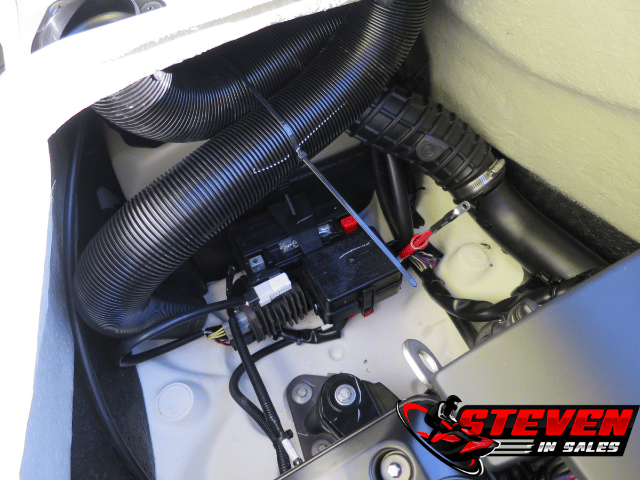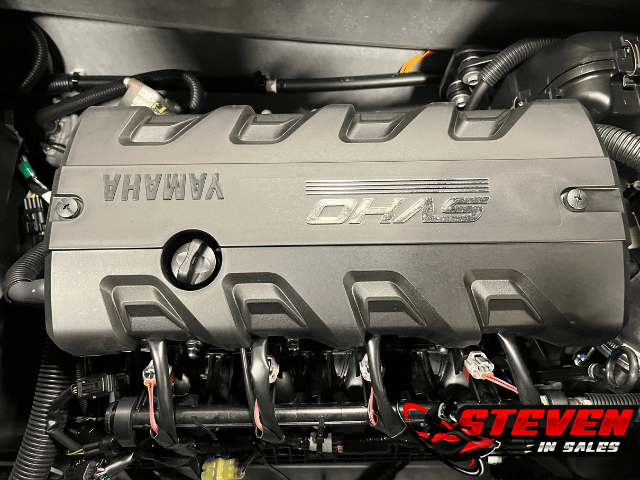I may be partially to blame in making people think that a jet ski doesn’t use a regular charging system, and you need to keep your battery on charge all the time.
It’s not that your machine doesn’t utilize some kind of charging system, it does, and when the engine is on the batteries are being “charged“. It’s just that lead acid batteries suck and go flat when not used for a long time. The solar charger or smart charger I suggest people get is more of a maintenance thing to keep your battery active while it sits for long periods of time.
Since I’ve been getting a few emails and comments asking about the charging on jet ski, I feel it’s time for a post on the subject. It’s an interesting system, while similar to your car, it’s vastly different, too. So let’s dig into how the charging systems and how they work on jet skis.
Do Jet Skis Have An Alternator?
Not many know this, but instead of using an alternator, jet skis utilize a stator for their charging system.
A stator works very similar, both charge your battery, but a stator is more focused on maintaining the charge (“trickle charge the battery“).
A stator is mostly used on smaller engines because they don’t take up as much room, “simpler”, and they can be stored inside the engine block. I consider this as a huge advantage, especially in such wet and rough environments.
Some manufacturers repurpose motorcycle engines for their watercraft, which means a stator for both a motorcycle and jet ski are similar.
3 Reasons For stators
There are 3 reasons why a stator is used.
- Stators are smaller.
- Stators can be built into the engine, which cuts down on weight and costs of manufacturing.
- Stators are simpler.
It’s interesting to note that a stator is a simplified alternator that produces just enough power for small engines with electric start.
Saving weight, cost, and keeping it simple is the goal, and thus they use stators.
Stator Vs. Alternator
You see, the key difference between a stator and an alternator comes down to magnets.
When it comes to generating electricity, both play by the same rule book. They both work by moving copper wires through a magnetic field.
But here’s the twist: a stator gets its magnetic power from fixed magnets, while an alternator relies on electromagnets. That’s where they really set themselves apart.
Now, the cool thing about an alternator is that it can create its very own magnetic fields. That means its power output doesn’t depend on how fast your engine’s spinning.
RPM Dependent
A stator is dependent on the RPMs, and why it’s more of a maintainer than a charger. Due to the irregularity of power, a voltage regulator (also called a voltage rectifier) is used.
Fixed magnets allow stators to be smaller and lighter, and you can put them inside the engine block.
What Does The Voltage Rectifier Do?
A voltage rectifier, or also called a voltage regulator, takes the power produced by the stator and converts the AC power into DC power and smooths it out to make it more constant and predictable.
Cleans It Up
Now, here’s the deal with most jet ski stators. You see, those magnets in the stator are set in their ways – they can’t tweak the magnetic field. So, when your engine revs up and goes faster, the stator starts cranking out more electrical power. Sounds good, right? Well, not always.
The catch is, if the stator produces too much power, it can end up zapping your sensitive electrical parts or even giving your battery a serious fry. That’s where the voltage regulator steps in to save the day.
Think of the voltage regulator as the hero that cleans up the “electrical mess.” It takes all that power and turns it into something useful. But here’s the thing, being a hero can be tough, and the voltage regulator takes a beating over time. So, don’t be surprised if it eventually wears out – it’s all part of the job.
Signs Of A Bad Voltage Regulator
One sign the voltage regulator has gone bad is that you will get a “12-Volt Low” on the display, but this could also mean the battery is bad, grounds are dirty, or a fuse is bad.
Most of the electrical issues I see tend to be a bad battery more often then a bad voltage regulator, but they will wear out.
Replacement
I consider replacing the voltage regulator as not being hard, it’s often next to the battery and comes off with a few screws and unplugging wires. (Most people could replace it with simple tools!)
Just make sure the battery is disconnected before you replace one.
How To Test Charging System
Testing the charging system to know if the stator or voltage regulator is working fine is similar to any other small engine.
With the craft out of the water, here is how you test the charging system.
- Connect a volt meter to the battery.
- Turn the engine on and look at the voltage reading.
- Rev the engine to 5k RPMs and look at the voltage reading.
- Turn the engine off, don’t run it out of the water for no more than 30 seconds.
If the voltage reading on both is NOT between 13.5 and 15 volts, then the voltage regulator or stator is bad. If the voltage reading is over 15 volts at 5k RPMs, then the voltage regulator is bad.
Here is a video on how to check the stator:




This is off track from the earlier question. I have a 2003 Honda Aquatrax (sp) It’s been serviced winter and summer. Garage kept. Do have cover for it. Practically new tires on trailer. Low hours. Is it worth keeping since we don’t take it out much or should I sell it?
If it’s running fine, I would keep it until it doesn’t. Honda made some great jet skis, but certain parts will be difficult to find, but you can still do the basics like an oil change and such.